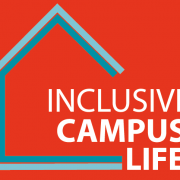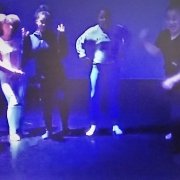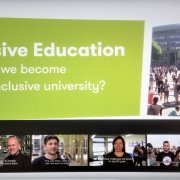Harvesting the Sun’s Energy
Excerpt
Harvesting the Sun's Energy is a research project that is developed with the goal to drive the interest, increase knowledge, motivation and confidence of first-year chemistry students. The project focuses especially on the target groups of first-generation and female students and is developed by two professors (in chemistry and in inclusive pedagogy) at the University of the West-Indies in Jamaica.
Narrative, origins and objectives of the initiative
What kind of project is this? Please give a short description (summary) of it.
Harvesting the Sun’s Energy is a hands-on laboratory research project at the University of the West Indies in Jamaica with the goal of engaging first-year chemistry students in a research-based lab that involves the discovery and evaluation of new materials for the production of hydrogen from water using sunlight to produce renewable energy. The project aims to drive interest, increase knowledge, motivation and confidence of chemistry students by developing a curriculum that is culturally relevant to the communities of the students. This project addresses the importance of inclusive pedagogy by examining a critical component of the science curriculum, the laboratory research experience. In particular, the project focusses on the educational benefits of new laboratory research experiments that are relevant within the specific context of Jamaica.
Please tell us why, in general, this project is considered a successful one?
Students in Jamaica lag behind in the sciences with critical double-digit dips in the 2015 Caribbean Secondary Examination Certificate (CSEC) results. These results extend to the tertiary level as illustrated in the high failure rates among undergraduate students in these subjects. In some cases, there is a reported 70% of undergraduate science courses with more than 25% of their students failing. Students often claim that the curriculum doesn’t relate to their own lives. Therefore, this project aims to connect to the context of the students in letting them explore and examine broad globally relevant topics like developing clean and sustainable sources of energy but look at those topics from their own cultural and local perspectives. This makes this project successful, because it emphasizes the importance of the sciences for the context of the individual students that participate in the project. This project is of great value to non-oil producing countries, such as Jamaica, that endure high-energy costs and demonstrate to the students that their work can contribute to solving a global challenge.
And why would you consider it a grass-roots initiative?
The idea for the project emerged from discussions between senior lecturer of Comparative Higher Education, Dr. Saran Stewart and lecturer in Chemistry, Dr. Nickeisha Stephenson –who has a love for science education — after performing small-scale experiments and demonstrations to enthusiastic grade two pupils at Dr. Stewart’s daughters school. The lecturers noted the enthusiasm of the grade two pupils to engage with science and reflected that this level of enthusiasm was missing from university students at UWI. When they examined the literature regarding science education in Jamaica it was concluded that there were relevant issues that needed to be addressed. For example, there are not many patents from Jamaican inventors in the sciences and existing patents did not get translated to new business ventures. Furthermore, there were studies showing that the lack of interests in the sciences started in early childhood. It became obvious that to solve the science problem we have to continue working with the 67 children in grade-school and also, train their future teachers –undergraduate science students –to be motivated and knowledgeable about science.
In their examination of literature, a critical article by Dr. Jennifer Schuttlefield Christus and Shannon Stahl (a former colleague of Dr. Stephenson’s) was published in the Journal of Chemical Education in 2016 that inspired both lecturers to examine if a similar study could be done in Jamaica (see link to article, https://pubs.acs.org/doi/abs/10.1021/acs.jchemed.5b00591). And help to facilitate a greater conversation about science through the science curriculum at the university level with first year students.
What challenges needed to be solved in this project?
One of the most important challenges that needed to be solved in this project was to make it as financially sustainable as possible. It was important to think practically. If funding runs out, how can the experiments be implemented from then onward? Making sure that the project uses low-budget, easy to access equipment and materials, hands-on elements for the different experiments was therefore very important. Another challenge that needed to be solved was getting all chemistry teachers on board. Therefore, it was important to discuss the necessary changes in their own pedagogies for it to be important for the student levels of motivation, confidence and knowledge in the sciences.
Is this initiative based on any particular theoretical framework? Which one?
This project was developed from the basis of theoretical frameworks like inclusive pedagogy that underscore the importance of constructivist perspectives and group-based learning. Second, science education literature explains the importance of hands-on laboratory experiments for it increases motivation, confidence and knowledge gain. Therefore, measuring student engagement is particularly important.
(Appendix) Is your intervention standing on its own or is it a part of a bigger and more holistic approach?
The intervention is part of a more holistic approach, as it has extended to many different areas of STEM education. Children love sciences and grade school kids have a natural affinity to the topics. Somehow between grade school and university this changes. It is very important to show students and pupils why it is important to examine these science topics, why they are learning this and how it relates to them, their cultural context and their own communities. This idea is embedded within the project as well as represented in the experiments, to make the students more aware of their own cultural context.
Please describe the group(s) intended as beneficiaries of this initiative
Why has this group (have these groups) been chosen?
The study includes both male and female as well as preliminary first-year students, however, the target groups for the research project are women and first-generation students. The reason is because these target groups are underrepresented in the sciences and because of the high drop-out rates among these groups.
Could you please tell us something about the relative size of the (of each) target group, within the school/university population, region and/or country?
Every year, there is an incoming cohort of about 650 preliminary first-year and first-year students who can participate in the project. About 400 students have been sampled for the study. More than 50,000 students are currently enrolled in the different programs of the University of the West Indies.
Which social characteristics are taken into account and what is the geographical area covered?
In this research project, approximately 70% of the sample size are first-generation students. These are students that are the first in their family to go to university in which other members of their family would not have completed higher education. Approximately 60% of the sample are female students. These groups also overlap, but the sample of first-generation students contains many male students.
On which level is the project implemented?
Please describe the political and socio-economic factors that you believe have been important enablers for your initiative
Did the initiative have political support?
Science and technology are quintessential industries that are undersubscribed to in Jamaica. This is evident in the declining number of patent applications and the high percentage of raw-material exports. Jamaica’s economic growth is hampered by high electricity costs that is expensive to the citizens of the country and adds to the stagnating growth of local industries that struggle to compete with foreign competitors that have access to cheaper sources of energy. To this end the identification, development and the implementation, of cheap renewable energy is part of the country’s Sustainable Development Goals.
The former Minister of Science, Technology, Energy and Mining, Phillip Paulwell, called for the improvement of science education in schools to increase productivity in the country (Jamaica Gleaner, 2012). However, students in Jamaica lag behind in the sciences with the recent double-digit dips in the 2015 Caribbean Secondary Examination Certificate (CSEC) results. High failure rates in the sciences at the high school levels and the declining number of graduate students in our universities are indicators that a deliberate intervention must be made to educate our students and provide them with the necessary skills needed to tackle the energy problem and other science based problem in the country.
How did it fit with local, regional or national policies?
The sciences are applied disciplines in which optimal learning is experienced through the direct interaction with experimental research. The former Minister of Education, Rev. Dr. Ronald Thwaites, argued that a need for more hands-on approaches to teaching and learning the sciences, especially with regards to laboratory research experiences, should be the primary focus. Towards that end, this research project fits into national policies since it seeks to examine the extent to which hands-on laboratory research experiences enhance the science motivation, confidence and knowledge levels of undergraduate science students.
Who are the stakeholders supporting the initiative?
- The University of The West Indies
- The Department of Chemistry
- The School of Education
Are there particular demographic changes present that are influencing the project?
It is becoming more and more important to make women enthusiastic for the sciences. Therefore, it is important to try to connect those students to peers, role models that are already doing science work. Also, it is important to show how these students themselves are represented in this field and show how global science issues are essentially also about real-life issues for their community and country.
What is the institutional strategy and culture of the (educational) organization?
To what extent does the initiative have an influence on institutional policy (or potential influence) of the (educational) organization?
As mentioned above, the results extend to the tertiary level as illustrated in the high failure rates among undergraduate students in the sciences. In some cases, 70% of undergraduate science courses with more than 25% of their students failing (Card & Lawrence, 2016). These alarming rates have been attributed to the student preparation and performances at the secondary level. Dr. Marvadeen Singh-Wilmott, in an interview with the Jamaica Gleaner on August 17, 2015, stated that “[students] are unable to manage the level one chemistry that we [The UWI] offer”. An increasing study success of students in the sciences is therefore important for the University of the West Indies. After the research is finished and published, the results of the study will be considered relevant for other science courses at the university as well and can aid in developing the university’s science program.
(Appendix) Is there public support for your initiative and the issue it addresses?
(Appendix) What other factors do you think have been important for the success of this initiative?
Please describe the overall initiative design and the methods and tools used to reach the goals
Please describe the specific activities carried out.
The project shows the importance of inclusive pedagogy in driving interest, increasing knowledge, motivation and confidence in chemistry sciences, while doing hands-on science laboratory research. The project is done once a year during the course of a 3-6 weeks model. The project employs a two-group pre-post institutional cohort with a quasi-experimental design, selecting science students from the preliminary and first year cohorts. Using systematic probability sampling, undergraduate students participate in a laboratory research experiment.
The curriculum of the control group remains unchanged. The curriculum of the research group is changed to make it more inclusive and relatable to the experiences of the students. It entails a pre- and post-assessment of both classes and looks at how the experiments enhance learning over two data point areas. The experiments of the research group are performed in small groups of 2-3 students across classes made up of 50 students per section. In these classes, the chemist (who herself is a first-generation university student) and her demonstrators discuss with them the process, the experiment, and why they are doing this experiment. They also relate to what it means to be a first-generation student and create awareness. Also, both classes teach the same global topics, for example sustainability, but will perform different experiments.
An example of a hands-on laboratory research is researching the novel electro-catalysts for photo-chemical water oxidation. Water oxidation has been identified as an ideal process for converting solar energy into a clean and sustainable source of energy. This technology is of great value to non-oil producing countries, such as Jamaica, that endure high-energy costs. An example of the experiment is HARPOON: Heterogeneous Anodes Rapidly Perused for Oxygen Overpotential Neutralization that is aimed at discovering electro-catalysts for the photo-chemical oxidation of water. The aim is to take promising results from the first year experiments and examine them further with second and final year chemistry students in order to provide more training in how to conduct research and communicate these findings to their colleagues through presentations, publications and patents.
What were the key roles (teacher, student, management team etc.) within the project?
In this project, key roles are experts in the field of inclusive pedagogy, chemists with a love for science education, research assistants, but also demonstrators and of course students are important. An expert in inclusive pedagogy is vital for the success of this project, to think about how the project will be delivered, what students will be part of the research pool, and what the level of prior knowledge is. He/she will also look at what schooling the students have had before. It is important to develop a research group of students and think of how the curriculum and experiments will relate to those students. It matters a lot how these questions are asked. It is important to develop the experiments together with an expert in chemistry, laboratory work that have a love for science education. Also, the role of research assistants and demonstrators are important to execute the experiments and assist the researchers in both the education as well as the research parts of the project.
What ideas, tools, theories, models, methodology (etc.) have been used to reach the goals?
What are the final revenues of the project?
Please describe if your project ensured its sustainability
If so, how did you ensure the short-term impact of the project?
The outcome and the delivery determine to what extend the project is able to ensure its sustainable character. The publication of the research is important to be able to scale up funding. The sustainability of this project is therefore not ensured, since it is still on-going and dependent on the outcome of the research publications forthcoming in 2019.
And how did you ensure the long-term impact of the project?
The Department of Chemistry is currently undergoing a curriculum renewal for their first-year course. The HARPOON experiment has been included in the renewal of the curriculum. The project thereby aims to ensure a long-term impact.
Has your project been replicated elsewhere?
Please tell us about the resources used in this initiative
What was the budget for the initiative?
The project received funding from the University of the West Indies and initial kit materials from Drs Stahl and Schuttlefield-Christus. The resources that are important to be able to execute and design this project are: researchers in both chemistry as well as in inclusive pedagogy, research assistants, but also available laboratories to do the different experiments as well as the necessary equipment for the hands-on experiments such as chemicals, kits etc.
How much did the initiative depend on volunteers?
How were the costs perceived by the public/the sector/other stakeholders?
To what extent did the initiative achieve its objectives?
Please describe the evidence to support the success of your initiative.
The project already shows results that it contributes to knowledge gain, increased motivation and confidence of the students that participated in the research group. According to the researchers, both the observations as well as the responses to the assignments, assessments and evaluation of the data are already considered to be phenomenal. The treatment lab experiment has had a positive influence on science motivation, science knowledge gains and science benefits with the largest change occurring in knowledge gains. From the chemistry perspective, initial screening efforts of the chemical compounds identified a calcium, iron, and manganese metal oxide that outperformed and was twice as active as the control group.
Did the intervention lead to any unintended (positive) outcomes?
The knowledge gain is also related to focussing on something that is bigger than themselves, the context of their communities, culture and the Jamaican context. Students tend to question their own assumptions, which is essentially part of the hidden curriculum, to work and think from critical discourse and ask tough questions. Students are more and more developing their own designs to think broader from than their own context and translate global issues to their communities. It allows them the necessary ownership in co-constructing the classes and redesigning science education.
What indicators (quantitative and qualitative) have you measured to demonstrate success?
As mentioned, this project measures to what extent the changed curriculum contributes to knowledge gain, increased motivation and confidence of the students that participated in the research.









